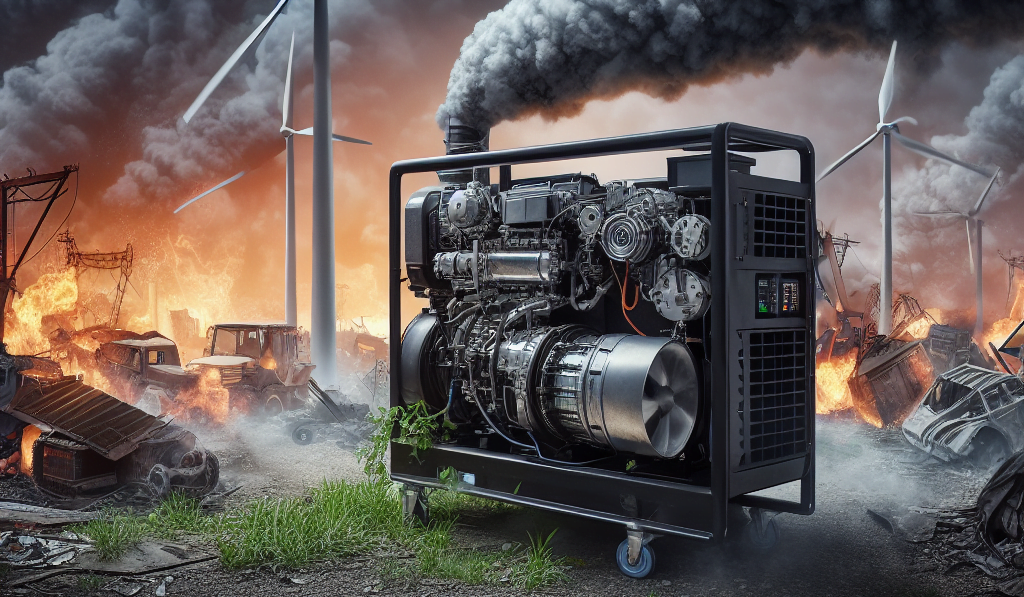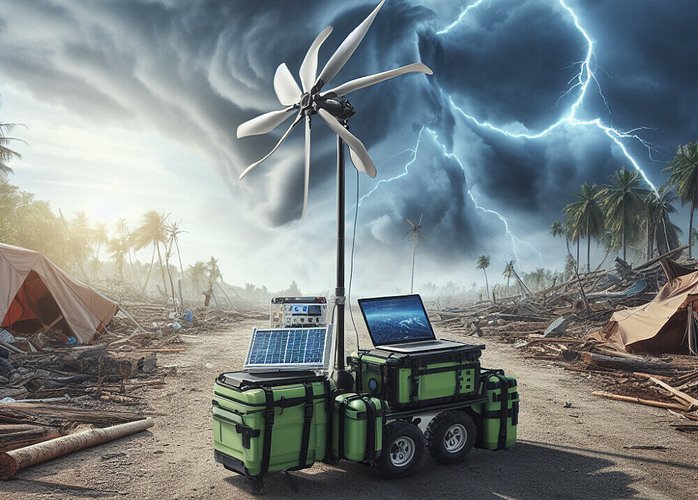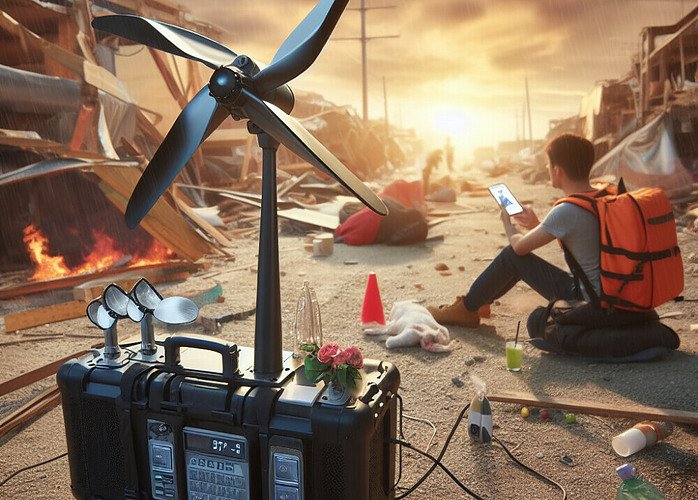In the face of escalating natural disasters, “How Wind Turbines Are Revolutionizing Disaster Relief Efforts” explores the evolving role of wind turbines. Focusing on their principles and historical context, they offer a cleaner, resilient energy alternative by converting wind kinetic energy into electricity, especially crucial in addressing the aftermath of various natural disasters. Examining past energy solutions underscores the imperative shift towards wind power. This article emphasizes the remarkable environmental impact of wind turbines, reducing carbon emissions and ecological strain, shedding light on their transformative potential in shaping a sustainable future for disaster relief efforts.
Grasping the Basics
Wind turbines epitomize sustainable energy, capturing wind’s kinetic power and converting it into electricity. To comprehend their role, understanding the fundamentals is crucial. At its core, a wind turbine comprises a rotor, generator, and tower. As the wind spins the rotor, a series of processes convert kinetic energy into clean, renewable electricity.
Historical Perspective

The historical perspective of harnessing the wind for sustainable relief marks a shift from traditional emergency power sources, such as diesel generators, to more eco-friendly alternatives. This transition reflects the growing recognition of the limitations and environmental impact of conventional methods, showcasing the importance of embracing wind power.
Share your thoughts.. on the shift to wind power for sustainable relief! How do you see the move from diesel generators to eco-friendly options impacting emergency power sources?
Real-World Examples
Typhoon Haiyan hit the Philippines in 2013, the World Food Programme successfully deployed wind turbines for rapid and sustainable electricity in disaster-stricken areas. These turbines powered essential facilities like hospitals and communication centres, showcasing their effectiveness in providing reliable and decentralized energy during emergencies, contributing to both immediate relief and long-term recovery efforts.
2010 Haiti earthquake, WindAid swiftly responded by installing wind turbines to restore power in areas with disrupted infrastructure. This innovative approach not only provided immediate, reliable electricity for crucial services but also laid the groundwork for sustainable, eco-friendly energy solutions. WindAid’s initiative showcased the potential of renewable energy in post-disaster recovery, emphasizing adaptability and innovation for long-term resilience.
Hurricane Maria in 2017, the island of Puerto Rico faced widespread power outages. The non-profit organization Resilient Power Puerto Rico initiated a project to install small-scale wind turbines in local communities, demonstrating the resilience of wind power in addressing immediate energy needs during disasters, especially in remote or hard-to-reach areas.
Wind Turbines: A Lifeline Post-Disaster
Wind turbines are vital for ensuring uninterrupted power during and after disasters. Their decentralized and resilient nature provides a continuous energy source, supporting emergency response and community recovery efforts. Placed strategically, these turbines supply electricity to essential facilities, demonstrating their adaptability and sustainability in the face of adversity. Wind power plays a crucial role in enhancing resilience and recovery in disaster-affected communities, accelerating recovery and laying the groundwork for building stronger, more adaptive communities in the long term.
Portable Wind Turbine Technology

Portable wind turbine technology is a cutting-edge innovation that offers flexibility in renewable energy deployment. Designed for easy transport and rapid setup, these compact turbines address diverse logistical challenges, providing a quick and reliable source of clean energy. This innovation is ideal for emergency response, off-grid scenarios, and applications in remote areas, showcasing the adaptability and accessibility of sustainable energy solutions for a resilient future.
Challenges and Considerations
Logistical challenges present obstacles in deploying wind turbines in disaster-stricken areas. Transporting and installing these structures becomes challenging due to damaged infrastructure and limited access. Overcoming these hurdles requires innovative solutions like portable turbine technologies and effective coordination with local authorities. Tackling these challenges is crucial for realizing the full potential of wind power in providing timely and sustainable energy solutions during post-disaster recovery.
Personnel and Maintenance
In disaster relief, trained personnel are crucial for efficiently operating and maintaining wind turbines. They play a vital role in monitoring, troubleshooting, and ensuring the turbines’ longevity. A well-prepared workforce is essential for addressing issues swiftly and maximizing clean energy use during relief efforts. Ongoing training and maintenance programs are crucial for reliable wind turbine deployment in disaster relief, ensuring sustained and efficient power generation for affected communities.
Policy and Infrastructure Hurdles
Integrating wind turbines into relief policies and infrastructure poses challenges, with policy gaps and infrastructure limitations. Overcoming these issues requires updates to policies and infrastructure improvements for seamless wind power integration in disaster-affected areas. A cohesive approach is crucial for maximizing the benefits of wind energy in disaster relief.
Viability Assessment
Assessing wind turbine viability for different disasters and locations involves considering factors like wind patterns, terrain, and specific needs. Optimal deployment is determined by high wind speeds for hurricanes or resilient designs for earthquake-prone areas. A thorough assessment ensures strategic placement for effective sustainable energy solutions in various disaster scenarios.
The Future of Wind Energy in Disaster Relief

Exploring the latest trends in wind turbine technology reveals advancements with great potential for disaster relief efforts. Innovations in modular and portable designs, along with improved materials and aerodynamics, enhance efficiency and durability in challenging conditions. Smart technologies, including real-time monitoring and predictive maintenance, boost overall reliability. These trends highlight the evolving role of wind turbine technology in providing efficient and sustainable energy solutions for disaster relief.
Investment and Funding
Emphasizing financial support for renewable energy in disaster-prone regions is crucial. It enables the implementation of solutions like wind turbines and solar panels, providing reliable power during and after disasters. This funding supports infrastructure development, and local personnel training, and reduces long-term costs, contributing to resilient communities with access to clean energy in challenging circumstances.
Collaboration
Disaster relief success relies on NGOs(Non-Governmental Organizations), governments, and private businesses collaborating. They pool resources for a swift, efficient, and innovative response. NGOs offer on-the-ground support, governments bring coordination and scale, and private enterprises contribute finances and innovation. This partnership ensures effective aid delivery, adaptability, and long-term recovery. This united effort maximizes impact and builds a resilient disaster response system.
Community Engagement and Education
In disaster relief, highlighting community involvement and educating about the benefits of wind energy is crucial. Engaging communities promotes awareness and support for renewables in post-disaster rebuilding. Involving communities ensures local perspectives, fostering a collaborative approach to integrating wind energy solutions for a resilient recovery. This emphasis paves the way for the successful acceptance and integration of clean and renewable energy in disaster-prone regions.
Conclusion
As we navigate an increasingly unpredictable world, the role of wind turbines in disaster relief continues to grow. From offering sustainable power solutions to fostering community resilience, wind energy emerges as a beacon of hope in the face of adversity. The future promises even more innovation and collaboration, paving the way for a sustainable revolution in disaster relief efforts.






